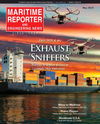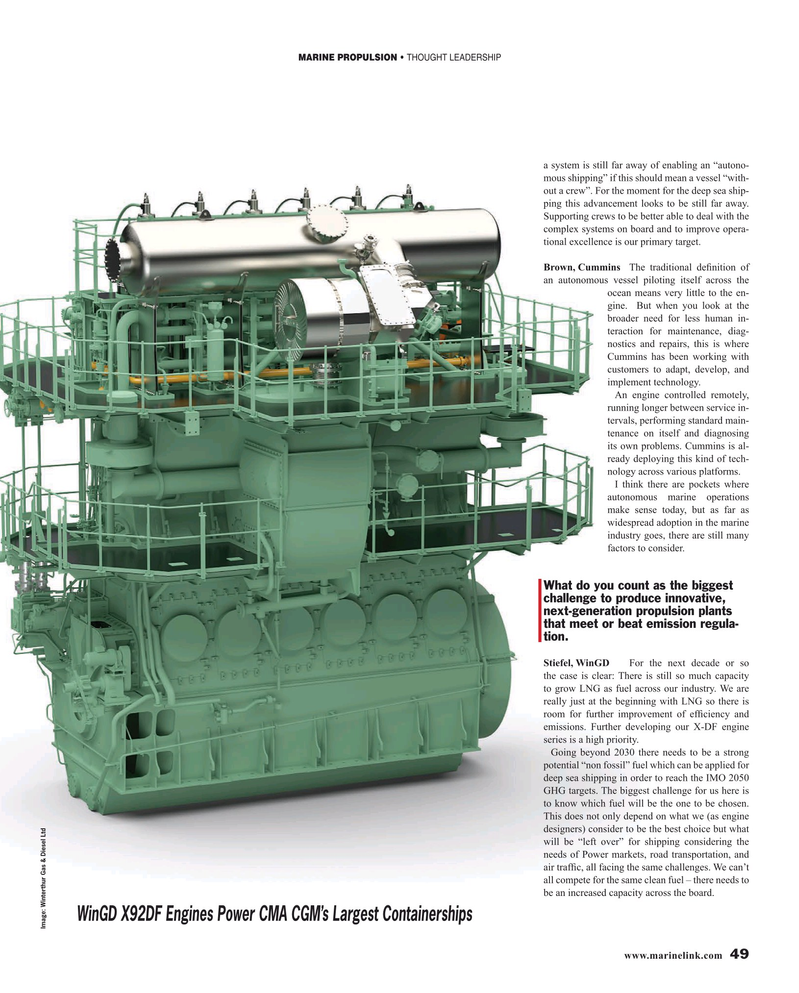
Page 49: of Maritime Reporter Magazine (May 2019)
Propulsion Annual - Green Marine Tech
Read this page in Pdf, Flash or Html5 edition of May 2019 Maritime Reporter Magazine
MARINE PROPULSION • THOUGHT LEADERSHIP a system is still far away of enabling an “autono- mous shipping” if this should mean a vessel “with- out a crew”. For the moment for the deep sea ship- ping this advancement looks to be still far away.
Supporting crews to be better able to deal with the complex systems on board and to improve opera- tional excellence is our primary target.
Brown, Cummins The traditional de? nition of an autonomous vessel piloting itself across the ocean means very little to the en- gine. But when you look at the broader need for less human in- teraction for maintenance, diag- nostics and repairs, this is where
Cummins has been working with customers to adapt, develop, and implement technology.
An engine controlled remotely, running longer between service in- tervals, performing standard main- tenance on itself and diagnosing its own problems. Cummins is al- ready deploying this kind of tech- nology across various platforms.
I think there are pockets where autonomous marine operations make sense today, but as far as widespread adoption in the marine industry goes, there are still many factors to consider.
What do you count as the biggest challenge to produce innovative, next-generation propulsion plants that meet or beat emission regula- tion.
Stiefel, WinGD For the next decade or so the case is clear: There is still so much capacity to grow LNG as fuel across our industry. We are really just at the beginning with LNG so there is room for further improvement of ef? ciency and emissions. Further developing our X-DF engine series is a high priority.
Going beyond 2030 there needs to be a strong potential “non fossil” fuel which can be applied for deep sea shipping in order to reach the IMO 2050
GHG targets. The biggest challenge for us here is to know which fuel will be the one to be chosen.
This does not only depend on what we (as engine designers) consider to be the best choice but what will be “left over” for shipping considering the needs of Power markets, road transportation, and air traf? c, all facing the same challenges. We can’t all compete for the same clean fuel – there needs to be an increased capacity across the board.
WinGD X92DF Engines Power CMA CGM’s Largest Containerships
Image: Winterthur Gas & Diesel Ltd www.marinelink.com 49
MR #5 (42-49).indd 49 5/3/2019 1:46:11 PM

 48
48

 50
50
